If you’ve ever grown onions in the home garden you’re probably most familiar with growing onions from sets. These are the small bulbs that look like miniature onions. They’re fun, cute, and inviting. Onion sets are readily available, inexpensive, and easy to plant. In fact, you can find them at most feed and seed stores, home improvements centers, big box stores, and even grocery stores. But here’s the thing, growing onions from sets, or even from nursery-grown transplants isn’t the best possible way to grow onions. If you want big, tasty, high-quality onions, you’re going to want to grow them from seed.
Onion sets are actually immature onion bulbs that were grown from seed. They are planted mid-summer of the previous year, plucked from the soil and stored dormant throughout the winter until it’s time for you to replant them.
Even though the sets are readily available, inexpensive, and easy, we prefer starting and growing from seed. When you purchase the readily available sets, your choice is usually red, yellow, or white. Growing onions from seed gives us the wide variety of options, it allows us to grow varieties that will work for us and our goals. It’s probably not something that you really think about, but there are dozens and dozens of different onion varieties. Just like growing tomatoes or peppers from seed you simply have more options.
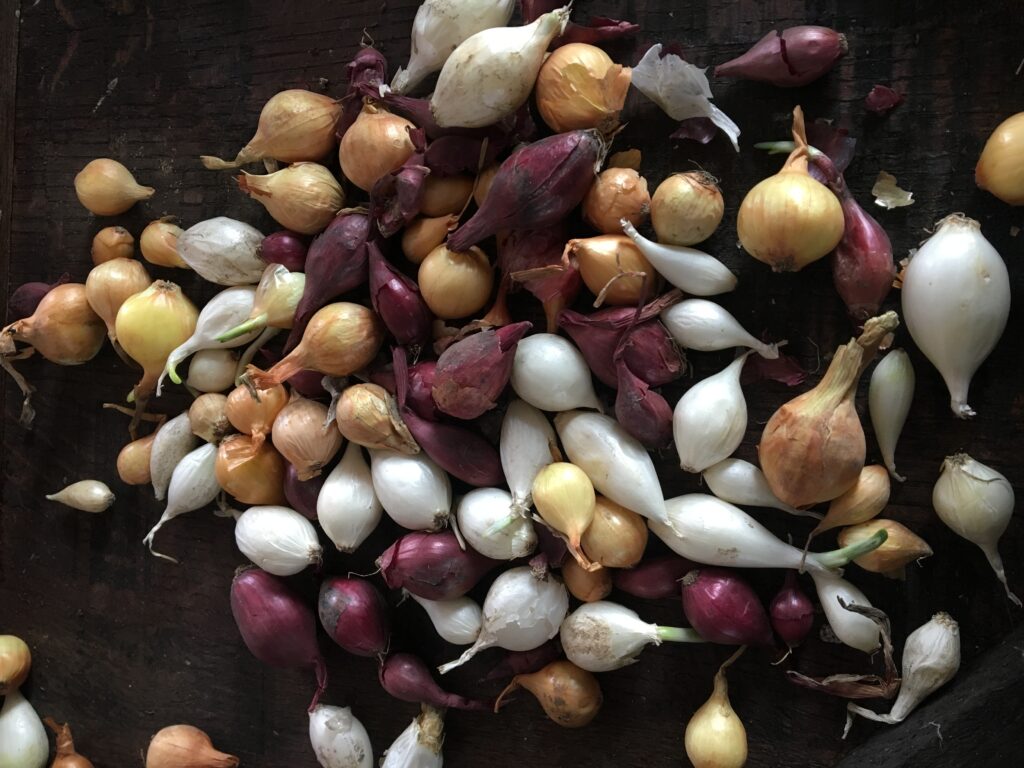
If you don’t have time to start onions from seed this year or want to try growing from sets make sure you pick the smallest onion sets. The bigger onion sets stop growing earlier and will go to flower sooner than the smaller set. Here’s once instance where bigger isn’t always better! It might seem counter intuitive, you’ll grow substantially larger onions from smaller sets.
OK. Small Onion Sets = Larger Onions.
Before we even get to the seed selection and seed starting process of growing onions you need to know your approximate latitude and amount of daylight that you receive during the growing season. If geography isn’t your thing, don’t worry, it isn’t ours either!
Why Does Location Matter?
There are three different types of onions that you can grow in your home garden; Short-day varieties, Long-day varieties, and Day-neutral varieties. The key to an abundant and successful harvest is knowing what variety you should pick to grow.
- Short-day onion varieties: This type of onion will form a bulb as soon as the days reach 10 to 12 hours of daylight. So we’re talking about southern gardeners that are located below the 35th parallel. These gardeners have slightly shorter days throughout their growing season. If you lived up north and picked this type of onion to grown you’d end up with tiny onion bulbs that start flowering early in the season.
- Long-day onion varieties: These are the type of onions that we grow in your upstate NY, zone 5 garden. This type of onion will form a bulb when the day’s hit approximately 14 hours of daylight. These are best for gardeners in the northern tier of the U.S. and Canada. If you lived down south and tried to grow this type of onion they simply would not produce a bulb, since the days aren’t long enough to trigger bulb formation.
- Day-neutral onion varieties: If you live some where in the mid-section of the U.S. these are your go to onion variety. This type of onion will begin to set a bulb when the days hit 12 to 14 hours of daylight.
Once you’ve determined the best variety for your garden location and purchased your seeds it’s finally time to start planting.
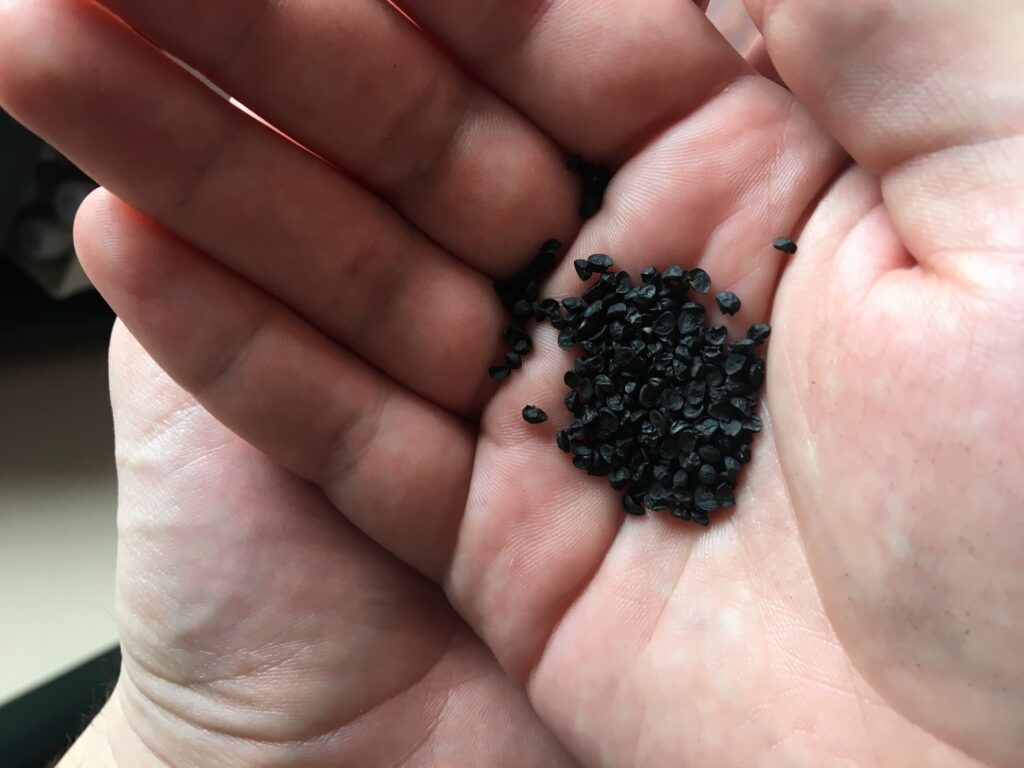
Onions are cool weather crops that require 90 days, or more, to reach maturity. A long growing season, coupled with their preference for cool weather means planting them directly in the garden can be tricky, and can lead you to disappointing results. You’ll likely get onions, but they will likely be small.
To address this issue we start onions several months before they are going to be planted out in the garden. In fact they are the first seeds that we start indoors in the winter. To me, they are a perfect way to help keep the winter blues away. Onions should be started 10 to 12 weeks before it’s time to plant them out in the early spring. The other key thing to remember about growing onions is that they are sensitive to the amount of light that they receive. For us, that means we only want to give them 10 – 12 hours of light a day. If we were to leave the grow lights on around the clock, or for 16 to 18 hours a day, it would trigger our seedlings to start forming a bulb. This would result in small, puny onions.
Let’s recap – keys to successfully starting onions from seed, pick the right variety, start them early, limit amount of light to 10 to 12 hours.
I know it might sound like a bit of work, but I promise you. It’s worth it!
How We Start Our Onions from Seed
This year we’re growing two onion varieties, Ailsa Craig and Southport Red Globe. Both types are long-day varieties. Ailsa Craig is an impressive onion, they are a huge yellow heirloom variety that can reach up to 5 lbs. They are best for fresh eating, sweet and mild. Last year we had good yields, they were our largest onion, many of them were in the 3lb range. If you’re interested in growing this variety keep in mind they aren’t meant for long term storage.
Southport Red Globe is smaller than Ailsa Craig. It’s a medium sized red onion that is firm and is one of the best red onion keepers. If you’re looking to grow and have a large harvest that you plan on eating into the winter months you’re going to want to grow a variety that keeps well.
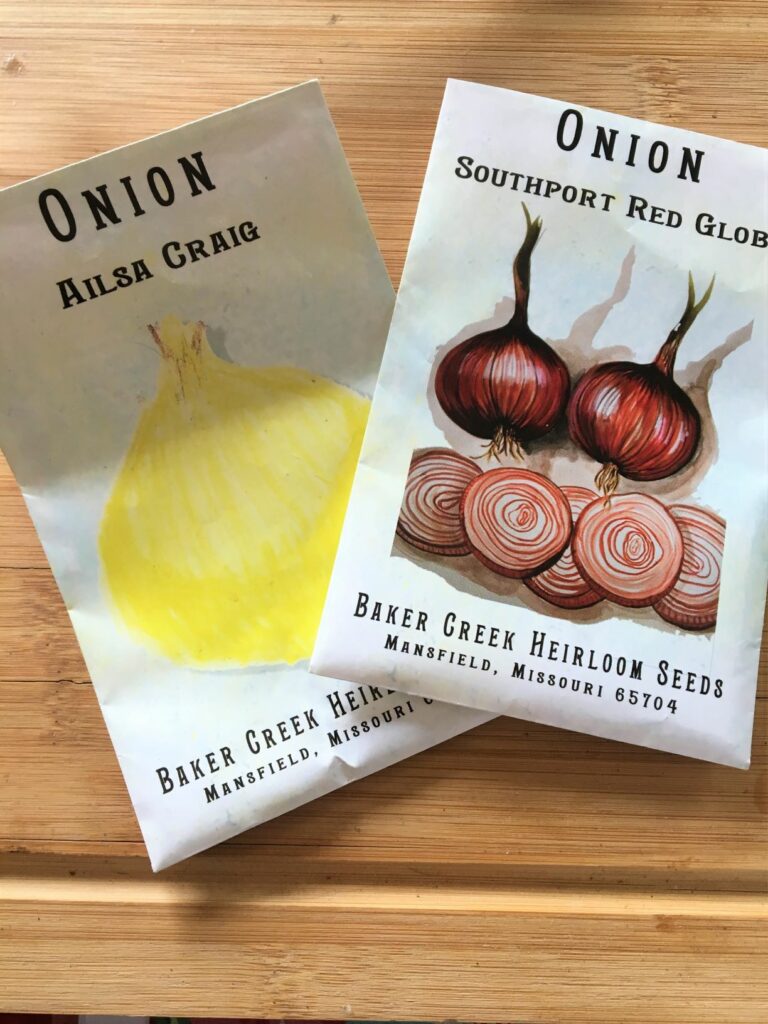
We start our onions seeds in mid-January. After the rush of the Holidays, it’s nice to start planning and doing some early gardening activities. We aren’t picky about the containers that we use, we typically will save used food containers that are wide and deep (large yogurt containers work well). Give them a good cleaning and poke some holes in the bottom for drainage and you’re good to go.
Add your soil to you container of choice, then sprinkle your onion seeds on top of the soil. We like to give it a heavy sprinkle. No need for neat rows, lines, or spacing, a haphazard sprinkle works just fine.
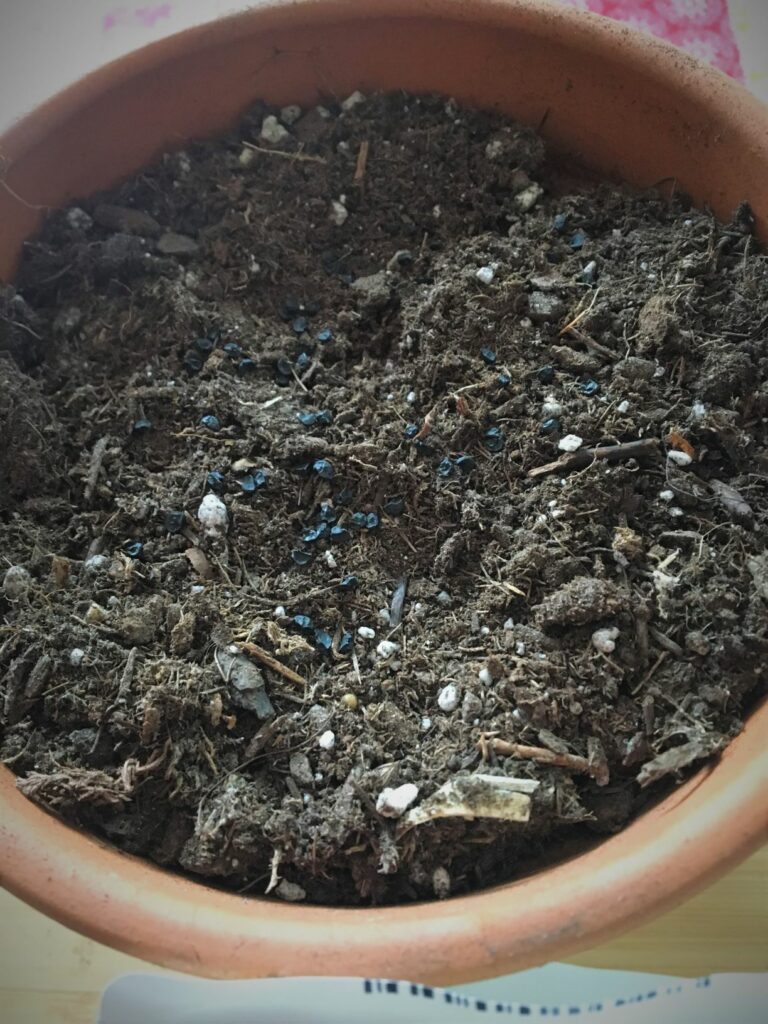
Gently cover your seeds with soil, press it down, and water. We like to use a spray bottle to mist the soil, wetting the top inch or so. You can cover the containers with some plastic cling wrap, place it under a dome, or simply keep an eye on it to make sure the soil remains moist. It’s very important that you don’t let the soil dry out. Germination typically occurs in 7 to 10 days.
After a week you’ll start to see thin green strands that are looped over poking through the soil! They will continue to grow and will straighten out. Don’t worry if the black seed cap is still attached to the end of the thin grass like strands, it’ll help strengthen the plant.
Once your seeds have germinated, remove the plastic covering and continue to water them, and keep them under a grow light for 10 to 12 hours a day.
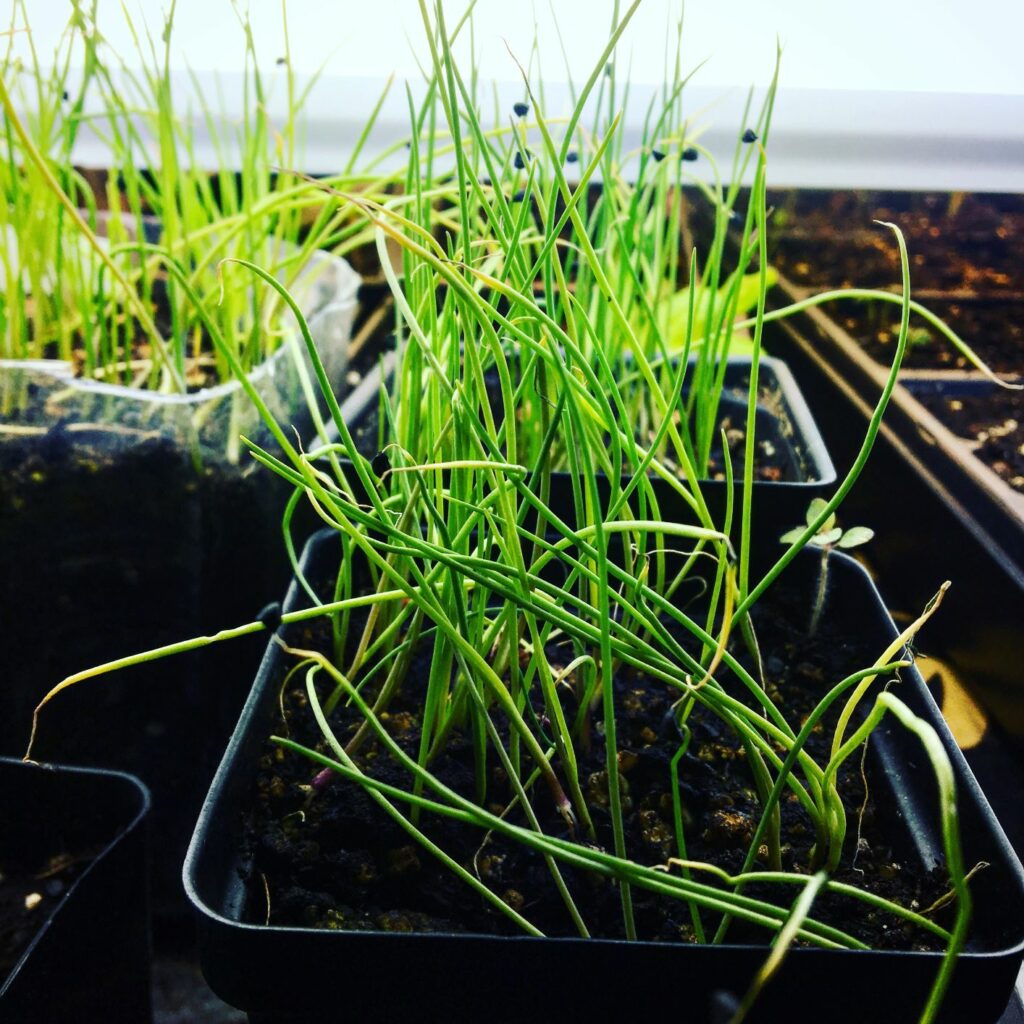
Trimming your onions
Your seedlings will grow, and they will get tall. They start out as wispy little threads, but quickly get thicker and taller. To keep them in check and promote strong, thick plants, we like to trim the onion tops. Don’t worry, it’s easy and won’t harm your plant. If your container starts looking like an overgrown lawn that’s on its way to hayfield it’s time to give them a trim. We like to cut them back to about 3 or 4 inches. We don’t measure, just eyeball it and cut. Some years we trim once, other years twice. It really depends on the weather outside and how fast we can transplant them out into the garden.

Those trimmings – they’re delicious. Use them in a salad, omelet, or throw them in your dinner.
Continue to water, trim as needed, and be mindful of amount of daylight hours… soon enough you’ll be on your way to transplanting them in the garden.
Are onions on our grow list this year? If so, what varieties are you planting?
Till next time…
-Ashley

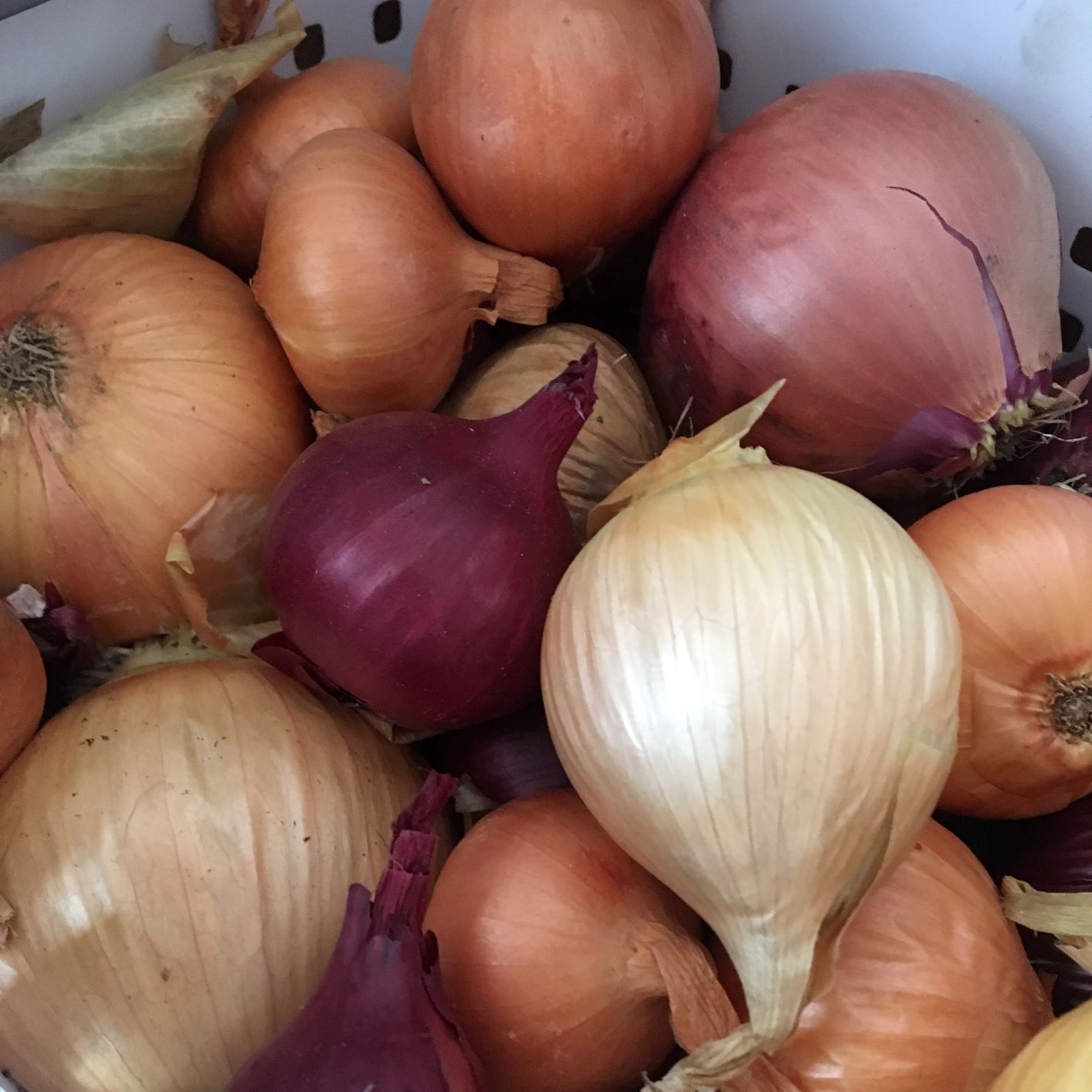
Great article, love the tips! I like green onions…they are mild and keep going tall. I just trim from the top!
PS: I purchased a pack of 99 cent green onions from my grocery store. I kept them in a pint glass and trimmed the tops when I needed onions. I ended up planting them in my garden, and they’re thriving!